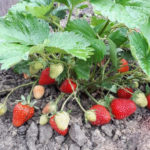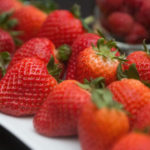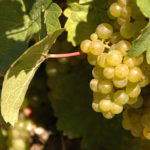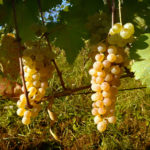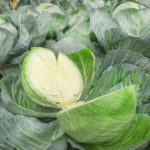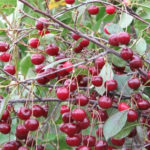Cherry variety Precious carmine
Around the middle of 1999, Canadian breeders from the University of Saskatchewan introduced gardeners to the first plant from the Romance series - the Carmine Jewel cherry, obtained by crossing steppe and common cherries. The series has fulfilled the gardener's dreams of winter-hardy cherry varieties that are small in size. Our hero is able to fully reveal himself in a continental and temperate continental climate, weather conditions are suitable for him, similar to North Dakota, Michigan, Oklahoma. The culture is not included in the State Register of Breeding Achievements of Russia. Nevertheless, the variety has already settled in Russian gardens, and gardeners are willing to share their impressions of the guest from Canada.
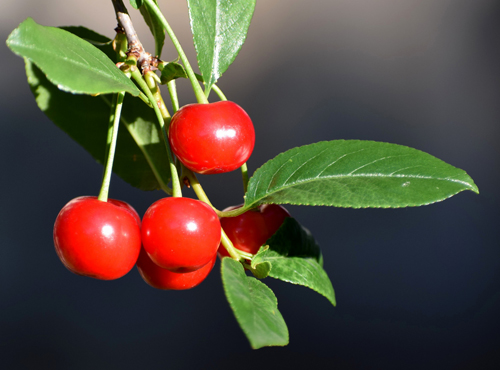
Description
The plant is small - about 2 meters, however, according to some information, trees can reach 3 meters in height. The culture is interesting in that it can be grown both bush-shaped and tree-like. The crown is wide, about 1.8 meters. Shoots are not thick, red-brown, with a slight coating of gray-silver color. The foliage is good. Leaves are green, small, very decorative, oval or obovate, leathery to the touch, with a glossy surface. The serrated edges of the leaf blade are slightly raised towards the center, the apex is slightly pointed, the base is wedge-shaped. The petiole is small, uncolored. The inflorescence consists of 1 to 4 flowers. Swelling cherry buds are pink, the blossoming flower is white, rather large.
The drupes of the variety are large - 3.5 - 4.0 grams. The skin is thin, glossy. The color depends on the degree of maturity. At the beginning of ripening, the berries of Precious Carmine become ruby, but they acquire real ripeness and unusual taste only when the color of the fruit becomes almost black. The pulp is dark red, tender, juicy. The taste is rich, dessert, not like cherry, there is no astringency. Insufficiently ripe berries give off sourness, but fully ripened ones become very sweet. On the Brix scale, the amount of sugar in the raw pulp is 14%. The juice is colored dark red. The peduncle is medium or long, not thick, uncolored. The stone is small, light brown, and can be easily separated.
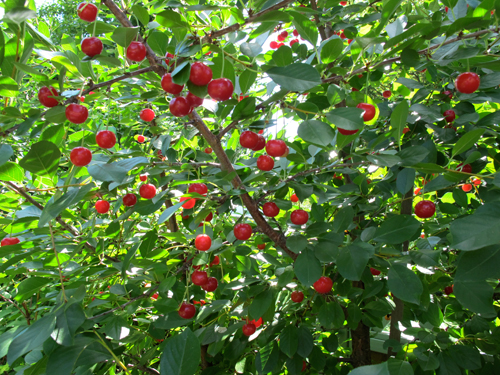
Characteristics
- Our hero's early maturity is not bad. The first berries ripen already in the 3rd year after cherry planting;
- the cherry jewel ripens at a later date - around the end of July. Moreover, the harvest ripens gradually, so the collection of fruits will drag on until the end of August or even until the beginning of September;
- such a long stay of cherries on the tree is only good for them. The longer they hang on the branch, the richer the flavor becomes. In addition, you should not be afraid that the ripe berry will fall off, it is very firmly attached to the stalk;
- the yield of the variety is not high, and you should not expect large yields from 5-6-year-old trees. But starting from 7 - 8 years, productivity increases, and already from one plant it is possible to collect 20 kg, and in some foreign sources it is said about 25 kg from a tree;
- in the fruiting of Precious Carmine, periodicity may appear, when one very productive year will be replaced by a medium-yielding one;
- fruits have high commercial qualities, therefore, in intensive gardens they are suitable for mechanized harvesting;
- frost resistance is excellent. The variety can grow in USDA Zone 3 - 8 (USDA system). A small tree can withstand a drop in winter temperatures down to -40 ° C;
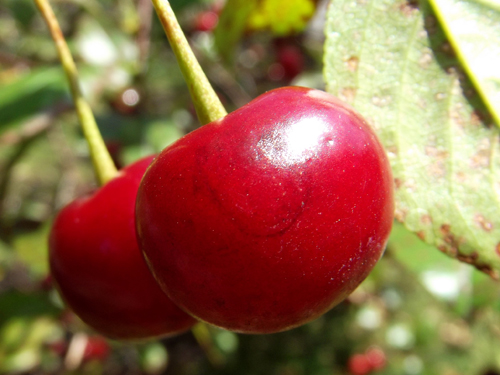
- immunity is high enough. True, there is no specific data, but many sources claim that the plant is not afraid of diseases or pests. In winter, you need to be wary of rodents;
- heat resistance is not very high. In a particularly hot summer period, the growth of the tree stops;
- transportability is not very high. Cherries are still a delicate product. But the harvest can be stored for almost a month in suitable conditions;
- the way of use is universal.The fruits are good in their natural form, as a dessert, they can be used to make jam, juice, compote, wine, baking stuffing and much more.
Pollinators
Precious Carmine is a partially self-fertile variety. Without the participation of pollinators, he is independently capable of setting and forming from 15 to 40% of the crop. Still, the varieties of cherries that coincide with the flowering period of our hero will help increase his productivity and improve the quality of the fruit.
Agrotechnics
Planting a plant is best done in the spring. Choose a site that is lit and protected from the prevailing wind in winter. Grooming includes standard bush culture procedures. But in the hot period, weekly watering is carried out, the soil should not dry out (waterlogging is also unacceptable). It is still better to insulate young trees in winter.
Canadian Precious Carmine is an amazing and successful variety that can show its best characteristics in a region with moderately warm summers and cold winters. He has many advantages, but one can argue about the shortcomings. Agree that small growth is very convenient for care and harvesting. Productivity in the first years is low, but then it increases, however, there is a periodicity in fruiting. Agrotechnology is common, the tree is unpretentious to the soil - it grows well on loam and sandy loam. Someone complains about the too long harvesting period, so it's great - you can eat natural juicy and sweet cherries for a whole month. The beautiful plant is even used to decorate the garden.
